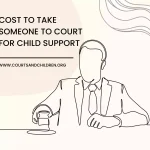Is Speeding with a Child in the Car Child Endangerment?
Introduction: is speeding with a child in the car child endangerment
In our fast-paced world, it’s easy to get caught up in the rush of daily life, including when we’re behind the wheel. However, when the urgency to reach our destination leads to disregarding safety, especially with a child in the car, the consequences can be severe. This article delves into the serious matter of speeding with a child in the car and whether it constitutes child endangerment.
The Dangers of Speeding
Speeding is a common traffic violation that poses significant risks to all road users. When a vehicle travels at an excessive speed, it reduces the driver’s reaction time, making it difficult to avoid collisions and navigate unexpected situations. Speeding can lead to severe accidents, injuries, and fatalities, with children being especially vulnerable due to their smaller size and developing bodies.
Children as Vulnerable Passengers
Children rely on adults to keep them safe, especially when in a moving vehicle. Their fragile bodies are ill-equipped to handle the forces exerted during a high-speed impact. In the event of a collision, a child’s organs and bones are more susceptible to damage, potentially resulting in life-long consequences.
Defining Child Endangerment
Child endangerment refers to putting a child’s life, health, or well-being at risk through actions that are likely to cause harm. Speeding with a child in the car can be viewed as a form of child endangerment, as it knowingly exposes the child to unnecessary danger and harm.
Legal Consequences
Laws regarding child endangerment due to speeding vary by jurisdiction. In many places, it is considered a serious offense, leading to fines, license suspension, and even imprisonment. These legal measures are in place to deter individuals from engaging in such risky behavior and to ensure the safety of young passengers.
Impact on Children’s Well-being
Experiencing a high-speed car ride can be distressing for a child. The loud noises, sudden movements, and lack of control can lead to anxiety, fear, and trauma. Moreover, if an accident does occur, the physical and emotional repercussions for the child can be devastating.
Educational Campaigns and Awareness
To combat the issue of speeding with children in the car, educational campaigns play a crucial role. These initiatives aim to raise awareness about the dangers of such behavior and promote responsible driving practices. By informing the public and emphasizing the importance of child safety, these campaigns contribute to a safer driving environment.
Parental Responsibility and Role Modeling
Parents and guardians have a vital role to play in ensuring the safety of their children. By obeying traffic laws and avoiding speeding, adults can set a positive example for young passengers. It’s essential to prioritize the well-being of children over the desire to reach a destination quickly.
Mitigating Speeding-Related Risks
Several strategies can help mitigate the risks associated with speeding and child endangerment. Implementing and adhering to speed limits, utilizing appropriate child restraints, and maintaining a safe following distance are some practical steps that drivers can take to enhance the safety of their young passengers.
Technological Interventions
Advancements in technology have led to the development of safety features that can help prevent speeding-related incidents. From speed-limiting devices to driver-assistance systems, these innovations work to encourage responsible driving and reduce the likelihood of accidents.
Community Involvement and Advocacy
Communities can play an essential role in addressing the issue of speeding with children in the car. Local organizations, schools, and law enforcement agencies can collaborate to raise awareness, organize events, and advocate for stricter enforcement of traffic laws to protect young passengers.
Child Psychology and Trauma
Speeding-related incidents can have a lasting impact on a child’s mental and emotional well-being. The trauma experienced during a high-speed collision can lead to anxiety, depression, and other psychological issues. Recognizing and addressing these effects is crucial for a child’s overall recovery.
Learning from Real-Life Incidents
Examining real-life incidents where speeding led to child endangerment serves as a stark reminder of the potential consequences. By analyzing these cases, society can gain a deeper understanding of the gravity of the issue and work towards preventing similar incidents in the future.
Public Opinion and Social Stigma
Public opinion plays a significant role in shaping behavior and norms. Society’s condemnation of speeding with a child in the car can create a social stigma that discourages such reckless behavior. This societal pressure can contribute to safer driving practices and increased accountability.
Global Perspectives on Child Safety
Child safety is a concern worldwide, and different regions have varying approaches to addressing the issue of speeding with children in the car. By examining global perspectives and sharing best practices, countries can learn from one another and collaborate to create safer road environments for children.
Conclusion
Speeding with a child in the car is a grave concern that should not be taken lightly. The well-being and safety of young passengers must always be a top priority for any responsible driver. By recognizing the dangers, advocating for change, and promoting safer driving practices, we can work together to ensure that children are protected from unnecessary risks on the road.
FAQs
- Is speeding with a child in the car a criminal offense?
Speeding with a child in the car can be considered a criminal offense, depending on local laws and regulations. It may lead to charges of child endangerment. - What are the potential consequences of speeding with a child in the car?
The consequences can range from fines and license suspension to imprisonment, depending on the severity of the offense and the jurisdiction. - How can parents educate their children about the importance of safe driving practices?
Parents can have open conversations with their children about the risks of speeding and the importance of following traffic laws. Leading by example is also crucial. - Are there any technological solutions to prevent speeding with a child in the car?
Yes, technological interventions such as speed-limiting devices and driver-assistance systems can help prevent speeding-related incidents. - What role can communities play in addressing this issue?
Communities can raise awareness, organize educational events, and advocate for stricter enforcement of traffic laws to protect children from speeding-related dangers.
Contents
- 1 Introduction: is speeding with a child in the car child endangerment
- 2 The Dangers of Speeding
- 3 Children as Vulnerable Passengers
- 4 Defining Child Endangerment
- 5 Legal Consequences
- 6 Impact on Children’s Well-being
- 7 Educational Campaigns and Awareness
- 8 Parental Responsibility and Role Modeling
- 9 Mitigating Speeding-Related Risks
- 10 Technological Interventions
- 11 Community Involvement and Advocacy
- 12 Child Psychology and Trauma
- 13 Learning from Real-Life Incidents
- 14 Public Opinion and Social Stigma
- 15 Global Perspectives on Child Safety
- 16 Conclusion
- 17 FAQs






